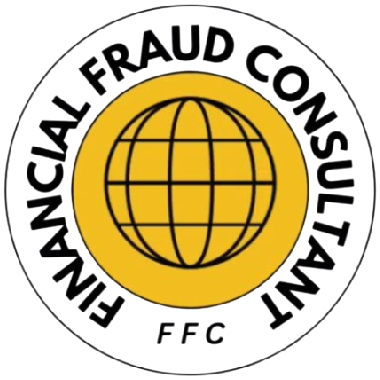
In today’s interconnected world, financial transactions are more seamless and frequent than ever before. From online shopping to digital payments, credit and debit cards, along with other financial instruments, form the backbone of our economic activity. However, this very convenience creates fertile ground for a pervasive and increasingly sophisticated criminal enterprise: financial transaction card fraud. This isn’t merely a minor inconvenience; it’s a serious crime with far-reaching consequences that can devastate individuals, cripple businesses, and undermine the integrity of the global financial system.
For anyone seeking to navigate this complex landscape – whether you’re a consumer aiming to protect your assets, a business striving to secure transactions, or simply an individual interested in understanding the legal ramifications of financial crimes – access to accurate, authoritative information is paramount. This interactive guide serves as a curated collection of essential resources that delve into the legal frameworks, definitions, statistical realities, and crucial prevention strategies surrounding financial transaction card fraud. By exploring these foundational references, you can gain a deeper understanding of why this is a serious crime and equip yourself with the knowledge needed to mitigate risks.
1. Understanding Federal Credit Card Fraud: 18 U.S.C. § 1029
Source: Federal Criminal Defense Advocates, PLLC
Relevance: This reference is fundamental to grasping the federal government’s approach to credit card fraud. While many cases are prosecuted at the state level, federal jurisdiction kicks in when the crime involves interstate commerce, significant financial losses, or organized criminal activity. Title 18, Section 1029 of the U.S. Code, often referred to as the “Access Device Fraud” statute, is the cornerstone of federal prosecution in this area. This section of our guide explains the key provisions of this important law.
This statute broadly defines “access device” to include not just physical credit and debit cards, but also account numbers, PINs, and other means that can be used to obtain money, goods, or services. The law criminalizes a wide array of activities committed knowingly and with the intent to defraud. These include:
- Using or trafficking in counterfeit access devices: This covers creating fake cards or distributing them.
- Unauthorized use of access devices: Utilizing a legitimate card or its information without the cardholder’s permission.
- Possession of multiple unauthorized devices: Holding 15 or more counterfeit or unauthorized access devices is a federal offense, even if they haven’t been used yet.
- Possession of device-making equipment: Having tools or software designed to create fraudulent cards.
- Obtaining anything of value: Using an access device to fraudulently obtain goods, services, or money aggregating $1,000 or more within a one-year period.
The penalties under 18 U.S.C. § 1029 are severe. A conviction can lead to substantial fines, potentially up to $250,000, and significant prison sentences. Depending on the specific subsection violated and the nature of the offense (e.g., whether it involved device-making equipment, affected a financial institution, or occurred as part of a larger pattern), the maximum prison term can range from 10 years to 15 years in federal prison. This statute underscores the federal government’s commitment to combating large-scale financial fraud and protecting the integrity of the national financial system. It also frequently overlaps with other federal charges such as mail fraud (18 U.S.C. § 1341), wire fraud (18 U.S.C. § 1343), and bank fraud (18 U.S.C. § 1344), further compounding the potential legal consequences for offenders.
2. The Gravity of Aggravated Identity Theft: 18 U.S. Code § 1028A
Source: Cornell Law School, Legal Information Institute
Relevance: Financial transaction card fraud very often involves the theft and misuse of personal identifying information, which brings it directly under the purview of identity theft laws. Among these, 18 U.S. Code § 1028A, known as the “Aggravated Identity Theft” statute, is particularly critical. This law was enacted to impose additional penalties on individuals who commit identity theft in conjunction with other serious federal felonies. This section explores the significant implications of this statute.
The core of § 1028A is its provision for a mandatory minimum sentence of two years in federal prison for anyone who “knowingly transfers, possesses, or uses, without lawful authority, a means of identification of another person during and in relation to” certain enumerated felony violations. This means that if a perpetrator uses a stolen credit card (which falls under 18 U.S.C. § 1029) and, in the process, also uses the cardholder’s name, Social Security number, or other identifying information to facilitate the fraud, they can be charged with aggravated identity theft.
Crucially, this two-year sentence is consecutive to any other prison sentence imposed for the underlying felony. For example, if an individual is sentenced to 5 years for credit card fraud under § 1029 and is also convicted of aggravated identity theft under § 1028A, their total prison sentence would be 7 years (5 + 2). This “stacking” of sentences highlights the severe view the federal justice system takes on crimes that not only involve financial fraud but also victimize individuals by stealing and misusing their identities. The enumerated predicate felonies that trigger § 1028A are extensive and include a wide range of fraud offenses, immigration violations, and even certain terrorism-related crimes, underscoring the broad application of this powerful statute in combating sophisticated criminal activities.
3. Statistical Realities: Quick Facts on Financial Instrument Fraud (FY 2023)
Source: United States Sentencing Commission (USSC.gov)
Relevance: Beyond the legal text, understanding the actual outcomes of financial fraud cases provides crucial context. The United States Sentencing Commission (USSC) is an independent agency within the judicial branch that establishes sentencing policies and practices for the federal courts. Their “Quick Facts” reports offer invaluable statistical insights into various federal offenses, including credit card and other financial instrument fraud. This section summarizes key data from the FY 2023 report.
The Fiscal Year 2023 report paints a clear picture of the seriousness with which these crimes are treated in the federal system. Key findings from this report include:
- Prevalence: In FY 2023, credit card and other financial instrument fraud constituted a significant portion of all theft, property destruction, and fraud cases reported to the Commission.
- Average Sentence: For individuals sentenced for credit card and other financial instrument fraud, the average prison sentence imposed was 27 months. This figure represents a substantial period of incarceration.
- Incarceration Rate: A striking 91.0% of individuals convicted of these offenses were sentenced to prison, demonstrating that non-custodial sentences are rare for federal financial fraud convictions.
- Median Loss: The median loss amount for these offenses was a significant $116,545. This highlights that federal cases often involve substantial financial harm.
- Aggravating Factors: The report also details factors that frequently lead to increased sentences, such as:
- The number of victims or the extent of harm caused.
- The use of sophisticated means to execute or conceal the offense.
- The use of an unauthorized means of identification (directly linking to § 1028A).
- A leadership or supervisory role in the offense.
These statistics from the USSC are not merely numbers; they reflect the tangible consequences faced by individuals convicted of financial transaction card fraud in the federal system. They underscore the severity of the financial fraud sentencing and serve as a stark reminder of the legal risks involved.
4. Proactive Defense: 8 Effective Strategies for Credit Card Fraud Protection
Source: Infosys BPM Blog
Relevance: While understanding the legal repercussions for perpetrators is vital, equally important is empowering individuals and businesses to protect themselves from becoming victims. This resource shifts focus from punishment to prevention, offering practical, actionable strategies to mitigate the risk of financial transaction card fraud. This section outlines these effective protective measures.
The blog highlights several key strategies that, when implemented diligently, can significantly enhance security:
- Vigilant Account Monitoring: Regularly checking bank and credit card statements for any unauthorized transactions is a first line of defense. Many financial institutions offer automated alerts for suspicious activity.
- Strong Password Hygiene and Two-Factor Authentication (2FA): Using unique, complex passwords for all online accounts and enabling 2FA adds crucial layers of security, making it exponentially harder for fraudsters to gain unauthorized access.
- Awareness of Social Engineering Tactics: Being wary of phishing emails, vishing calls, and smishing texts is critical. Fraudsters often impersonate legitimate organizations to trick individuals into revealing sensitive information. Recognizing red flags like unsolicited requests for personal data or urgent demands for action is key.
- Securing Physical Cards: Simple measures like keeping cards in a safe place, shielding PINs at ATMs or POS terminals, and immediately reporting lost or stolen cards are fundamental.
- Secure Online Shopping Practices: Only making purchases on reputable, secure websites (indicated by “https://” and a padlock icon in the browser bar) and avoiding financial transactions on unsecured public Wi-Fi networks are essential for online safety.
- Shredding Sensitive Documents: Disposing of documents containing personal or financial information by shredding them prevents dumpster diving and identity theft.
- Limiting Card Exposure: Carrying only necessary cards and considering using mobile payment options that tokenize card data can reduce exposure.
- Regular Software Updates: Keeping operating systems, browsers, and security software updated helps protect against vulnerabilities that fraudsters might exploit.
These strategies collectively form a robust defense against the ever-evolving tactics of financial transaction card fraudsters. By adopting these proactive measures, individuals and businesses can significantly reduce their vulnerability and contribute to a safer financial ecosystem.
Why These Resources Matter: Empowering Through Information
Our service connects you with vetted crypto recovery specialists to navigate the complexities of lost or stolen digital assets.
These curated references are more than just links; they are gateways to critical knowledge that can empower individuals and businesses in the face of financial transaction card fraud. Understanding these resources is crucial for several reasons:
- Understanding the Legal Landscape: They provide clarity on the specific laws, both federal and state, that define and penalize financial transaction card fraud, helping to demystify complex legal terminology.
- Recognizing the Severity: By detailing potential prison sentences, fines, and the mandatory nature of certain penalties (like aggravated identity theft), these resources drive home the serious nature of these crimes for perpetrators.
- Staying Informed and Proactive: They offer insights into the latest fraud trends and, crucially, provide actionable steps for prevention, shifting the focus from reactive damage control to proactive protection.
- Informed Decision-Making: For those in legal or financial professions, these resources are indispensable for understanding the nuances of prosecution, defense, and victim support.
By diligently exploring and internalizing the information presented in these authoritative sources, individuals can better protect their financial well-being, and businesses can fortify their defenses against the costly and damaging impacts of financial transaction card fraud. Remaining vigilant and informed is our strongest collective defense against this pervasive form of modern-day crime.
References
- Federal Criminal Defense Advocates. “18 U.S.C. § 1029 | Federal Credit Card Fraud.” *Federal Criminal Defense Advocates, PLLC*. https://www.thefederalcriminalattorneys.com/fraud-crimes/federal-credit-card-fraud (Accessed May 24, 2025).
- Cornell Law School, Legal Information Institute. “18 U.S. Code § 1028A – Aggravated identity theft.” *Legal Information Institute*. https://www.law.cornell.edu/uscode/text/18/1028A (Accessed May 24, 2025).
- United States Sentencing Commission. “Quick Facts on Credit Card and Other Financial Instrument Fraud (Fiscal Year 2023).” *USSC.gov*. https://www.ussc.gov/research/quick-facts/credit-card-and-other-financial-instrument-fraud (Accessed May 24, 2025).
- Infosys BPM. “8 Effective Strategies for Credit Card Fraud Protection.” *Infosys BPM Blog*. https://www.infosysbpm.com/blogs/fraud-retail/credit-card-fraud-prevention.html (Accessed May 24, 2025).
- North Carolina General Statutes Chapter 14, Article 19B, § 14-113.9. *NC General Assembly*. https://www.ncleg.net/EnactedLegislation/Statutes/PDF/ByArticle/Chapter_14/Article_19B.pdf (Accessed May 24, 2025).




